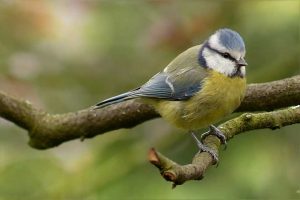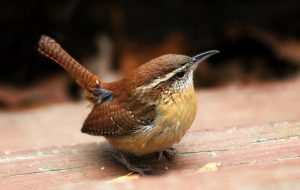It happened to me, not once, but twice. The first time I was engrossed in a programme on the television and an almighty thump made me jump from my chair in time to see a blackbird slump to the patio.
The second time I was driving on the motorway, again that same loud thump and a haze of black. At 70mph, we were going too quick to determine the bird, but I do recall it flew off, albeit a little dazed.
If, like me, you wonder why birds fly into windows, and what to do when it happens, read on.
Birds flight into the glass for different reasons, depending on if it’s day or night-time.
During daylight, they are attracted to whatever they see through the glass or the reflection of the vegetation in it; they simply don’t recognise that there is a barrier there.
When it is dark it is believed that birds, particularly migratory ones, are attracted by the lights inside buildings.

Table of Contents
Why birds fly into windows during the day
The BTO, British Trust of Ornithology, believe that 100-million birds fly into windows each year in the UK alone, and around a third of them don’t survive. If they don’t die on impact, many don’t recover from their injuries and die a while later, often at the hands of predators.
It is a common phenomenon all year round but most likely to happen in the spring when the babies are learning to fly.
- Birds can’t see the glass, but they look through to see what is on the other side of it. This means they might be heading for your potted plants and herbs on a window sill.
- They also see reflections; what they think is a bush laden with ripe berries, might just be the mirror image of what is in your garden.
- Occasionally, it is just chance, such as my car crashing bird. Maybe it’s judgement and timings were out, or maybe it was pure bad luck.
- Human brains detect glass due to what’s around it, door frames and window ledges for example. Birds’ brains don’t process information the same way.
Night-time accidents
Many migrants are nocturnal and fly at night. This includes many of our beloved songbirds.
The results of studies show that artificial light, such as that in our homes, cause birds to deviate from their intended flight path. It is believed to happen as the birds wrongly assume the glow is coming from the moon and stars, things they use to navigate their journey.
For this reason, most birds fly into windows at night during migration season, especially when vision is reduced due to foggy conditions.
How to prevent birds from flying into windows
Methods of prevention depend on how troublesome the issue is and your budget.
Bird-friendly glass
To the human eye, it looks like normal glass, but the fibre interlaced through it ensures birds see it.
It is very effective but often too expensive for homeowners. Large buildings and nature and animal-friendly businesses tend to use this glass during construction or window replacement.
Bird tape
A translucent sticky tape that you apply to the outside of the windows. It is barely noticeable, doesn’t mark the glass, and lasts for up to 4-years.
Mark the glass
Use a bar of soap to make vertical markings on the glass. It is enough to make the window visible to the birds and is a very cheap, quick fix. It is, however, noticeable to humans, it just depends whether you can live with it.
Stickers
A few well-placed stickers or decals will alert birds to the glass. It only takes moments to do, and any gummy residue is easily removed with a little rubbing alcohol.
Whichever method you use, the secret is to use the tape, paint, or soap in a grid-like pattern to provide the birds with the greatest chance of spotting glass.
The most ineffective method of preventing birds from flying into windows at night is to draw the curtains. As soon as it is dark enough to put the lights on, close any blinds to keep our feathered friends safe.

What to do if a bird flies into your window
If it happens, it is unlikely that the bird will have sustained any broken bones, more likely a brain trauma, known as concussion. In worse cases, the poor bird might also have some internal injuries.
While it is illegal to keep a wild bird, it is allowed to care for one for a short time to nurse them back to health. Just remember, the bird will need as little stimulus as possible so try not to interact with it.
- Observe from a distance. The bird might only need a minute or two to recover, but while it’s guard is down, you should ensure no predators can get to it.
- If there is no sign of improvement after five minutes, find a shoebox and an old towel.
- Punch some air holes in the box and line it with the towel.
- Carefully place the bird inside, keeping it upright at all times to keep its airways free.
- Replace the lid and take the box to a warm, quiet place, away from danger.
- Check on its recovery every 20-minutes. At the 2-hour mark, you should carry the box to an open space, remove the lid, and hopefully, the bird will fly away.
If there is no sign of improvement, you need to give the professionals a call. There are many local experts listed online who will offer help and advice.
Final thoughts
Now that we know why birds fly into windows, we are better prepared to try and prevent it from happening as much.
After all, with so many species in decline, we cannot afford to unnecessarily lose millions of birds annually to somewhat avoidable accidents.

One Spring we had, I think, a yellow warbler, attacking our window for something like 3 days. We thought maybe “he” saw his reflection and was being territorial and trying to chase off another male aka his own reflection.